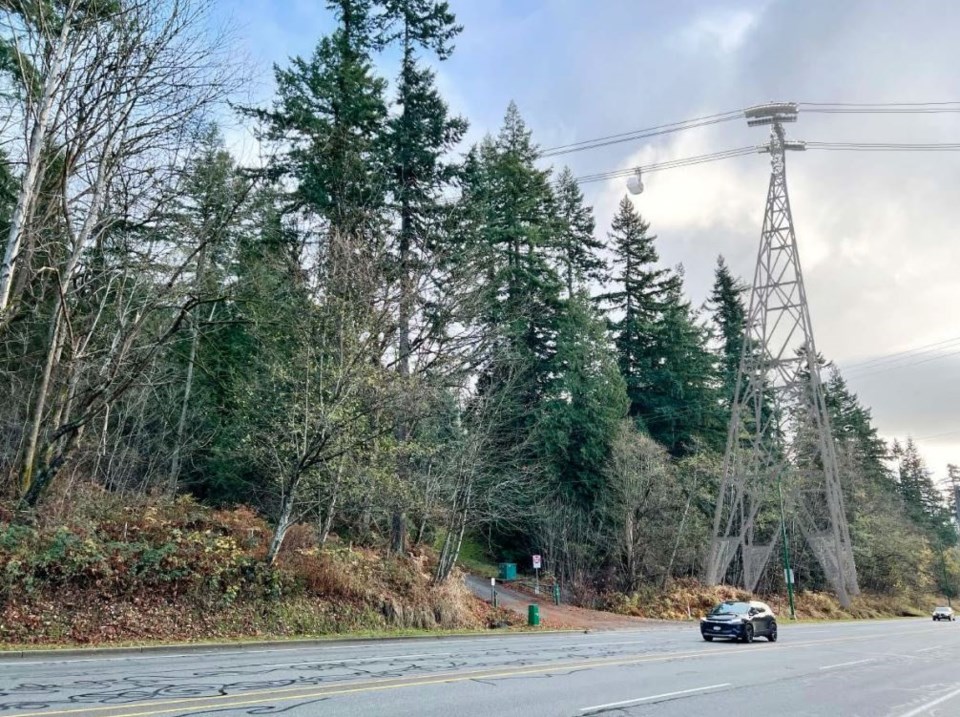The Editor:
Re: Letter: Burnaby gondola project won't solve the region's transportation problem (Nov. 16, 2023)
As Ms. Baker correctly points out, SFU's transportation needs can easily continue to be met using the existing road network plus separated cycle paths.
So why would we put the Burnaby 200 Conservation Area and the Burnaby Mountain Conservation Area at risk by operating an urban gondola through the middle of them?
Since 2011, when TransLink first pitched the idea of an urban gondola to SFU to the Mayors' Council on Transportation, TransLink has had over a decade to obtain a Comprehensive Environmental Assessment, including a biodiversity inventory and cumulative human impact assessment, of the Burnaby Mountain Conservation Areas as community groups have demanded and it has failed to do so.
Why is that? Why does TransLink now plan to do a short cut Environmental Screening Assessment instead of a Comprehensive Environmental Assessment? Is it because it doesn’t really want the public to know the toll a gondola would take on biodiversity within the Conservation Areas?
As far as I understand it, TransLink’s current plan is to build four gondola towers, one in close proximity to the Burnaby 200 Conservation Area and two that would be within or in close proximity to the Burnaby Mountain Conservation Area (as well as the forested area above University Drive E). The gondola cables and cabins, of course, would run right through the middle of the two Conservation Areas.
If a gondola were to go ahead, not only would there be destruction of habitat for towers, Transportation Regulators may also require TransLink to clear cut trees under the gondola path. Furthermore, aerial habitat would be compromised by a constant stream of gondola cabins going up and down the mountainside day and night. Birds, bats and owls would be at risk of crashing into the gondola cabins.
Noise and light pollution also threaten biodiversity. Regarding noise, birds and other wildlife depend on their hearing to listen for predators, listen for prey, to hear mating calls and to hear the vocalizations of their young. If their ability to hear is compromised by noise in an area, they will move to a quieter area. Animals that have to move to a different area face other perils such as 'no available suitable habitat' that is not already occupied, which means they die.
The Conservation Areas are already subject to noise from the SkyTrain, Trans Mountain construction, traffic on Lougheed Highway and Gaglardi Way and new housing developments in neighbouring areas.
Why add gondola noise directly inside the Conservation Areas when that is not necessary? Especially, when there is reason to hope that noise levels will decline when the Trans Mountain construction is completed and society moves to relatively silent electric vehicles.
Like noise pollution, light pollution also poses threats to wildlife and birds. TransLink has said that the gondola cabin lights would be dimmed as the gondola cabins travel over the community of Forest Grove located within the Burnaby 200 Conservation Area and the lights would be turned back up for the rest of the trip. In other words, TransLink intends to light up the urban forest at night!
Anyone interested in how noise and light pollution may affect biodiversity in the Conservation Areas can get a sense of the effects by Googling "noise pollution effects on environment" or "light pollution effects on wildlife."
There are likely other ways as well, that have not occurred to me, a non-scientist, in which constructing and operating a gondola may impact biodiversity in the Burnaby Mountain Conservation Areas. The public deserves an independent Comprehensive Environmental Assessment, including a biodiversity inventory and cumulative human impacts assessment to help inform our understanding of the known risks to biodiversity of running a gondola through the Conservation Areas and where the risks cannot be determined at this point in time because the science is still evolving.
According to the World Wildlife Fund (WWF), experts now believe that the earth is in the midst of a sixth mass extinction (the last one being 65.5 million years ago when the dinosaurs became extinct). The WWF explains that a mass extinction is when a high percentage of biodiversity, or distinct species — bacteria, fungi, plants, mammals, birds, reptiles, amphibians, fish, invertebrates — are dying out.
If there was ever a time to protect nature and do our part to preserve it, it is now!
We need a Comprehensive Environmental Assessment, including a biodiversity inventory and cumulative human impacts evaluation, of the Burnaby Mountain Conservation Areas.
If a gondola would pose a significant degree of harm to biodiversity or if there remains significant environmental unknowns, it would behoove us to follow "the precautionary principle" and hold off on constructing Canada’s first urban (non-resort) gondola through two priceless Conservation Areas!
- Christine Cunningham, Burnaby





